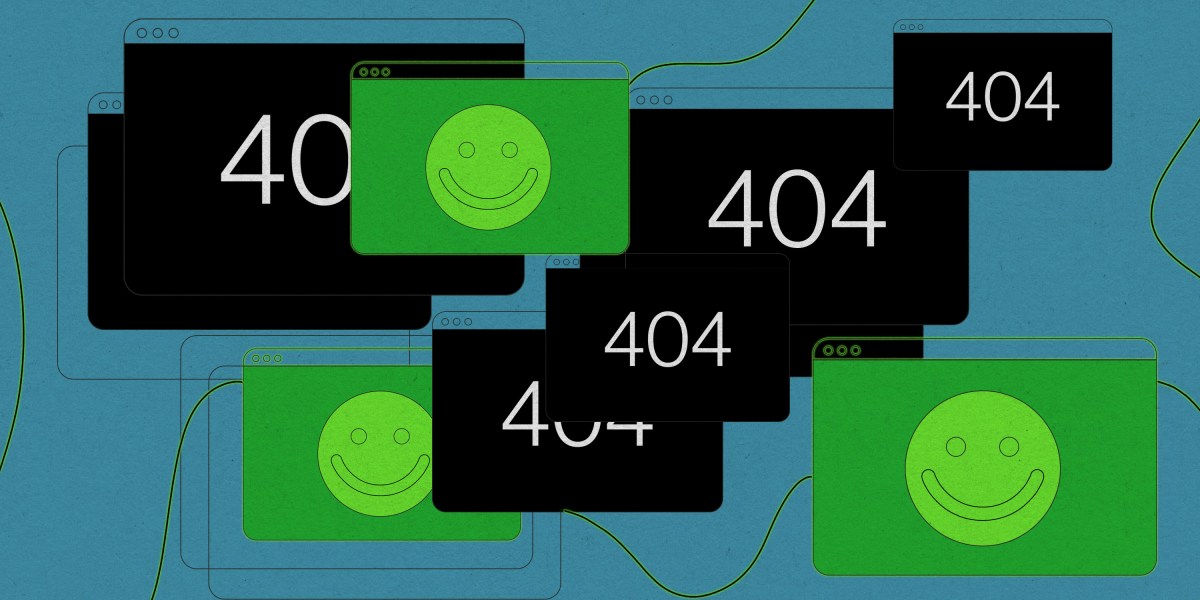Google has a new tool to outsmart authoritarian internet censorship
Google has a new tool to outsmart authoritarian internet censorship MIT Technology Review


Google Launches New Anti-Censorship Technology to Increase Internet Access

Google is launching new anti-censorship technology created in response to actions by Iran’s government during the 2022 protests there, hoping that it will increase access for internet users living under authoritarian regimes all over the world.
Jigsaw, a unit of Google that operates sort of like an internet freedom think tank and that creates related products, already offers a suite of anti-censorship tools including Outline, which provides free, open, and encrypted access to the internet through a VPN. Outline uses a protocol that makes it hard to detect, so users can surf the web largely out of sight from authorities who might want to block internet access.
But during last year’s pro-democracy protests across Iran, the regime used sophisticated tactics, not only intermittently blocking all internet access but targeting VPNs like Outline too.
Now Jigsaw is releasing Outline’s code in the form of a software developer kit (SDK) so that other applications can build censorship resistance directly into their products, the company exclusively told MIT Technology Review. This will create an easier and more streamlined user experience. For example, users of an app that runs this code—like a news site, for example—need not connect separately to the internet through a VPN. And at the same time, Google hopes it will put the users one step ahead of the censors.
Lessons from Iran
On September 19, 2022, the Iranian government started to shut off mobile internet service in Tehran during protests against the killing of Mahsa Amini days earlier. The Iranian government, long known for technically sophisticated surveillance and a propensity for cracking down on internet use, began regularly shutting down the internet from 4 p.m. until midnight.
As Iranians started looking for alternative ways to access WhatApp, Instagram, and the rest of the web, many turned to VPNs, like Outline, which can route traffic out of the affected area through a sort of virtual tunnel. The number of daily users of Outline’s VPN on Android jumped a whopping 1,500 percent in Iran during the fall of 2022, according to Jigsaw’s lead engineer for internet freedom, Vinicius Fortuna.
But at the same time, the Iranian government also sometimes blocked access to Outline and to apps that relied on the VPN. Jigsaw’s team then had to respond by quickly publishing new open-source code that could evade the blocking and restore internet access.
This was a challenge for Jigsaw, and also for applications dependent on Outline, which then had to re-code their own products to accommodate the changes. Martin Zhu, the director of engineering for one such app, nthLink, which also helps users circumvent censorship, said that this process could take up to a few weeks—while users were kept in the dark.
While the idea had been floating around for several years, Outline’s new SDK is a direct response to the obstacles from Iran, according to Fortuna.
Fortuna also says that through the SDK, Jigsaw is extracting components of Outline’s technology “that we think are useful to other people” and building a library. This enables a sort of plug-and-play functionality so that others can take elements of the library to build censorship resistance into their own products as they see fit.
Importantly, during crackdowns, the SDK will make it easier for developers from different companies to work on the same code and enable them to run updates more efficiently, allowing for quicker responses to evolving censorship tactics.
A simple solution
Several groups are already planning to deploy the new technology. Balatarin, a Reddit-like site in Persian, plans to use the SDK to build VPN functionality directly into its mobile app. Balatarin is well accustomed to censorship from the Iranian government; its website has been blocked in the country since its early months. NthLink will also use the SDK to make its app more updateable during internet shutdowns.
Balatarin says this new technology could help many more users access its services, especially those who are not particularly tech savvy. Running a VPN requires a level of tech fluency, and it also takes more energy and battery power than standard internet use—which is why a solution like the SDK is a good one, says Mehdi Yahyanejad, the founder of Balatarin: “When the app is in use it will be much easier. And it would help users.”
This simplicity is also crucial because the Iranian government has made its own limited version of the internet and is offering access at cheaper rates for businesses and households. (It has also forced telecoms to hand over direct access to their networks and user information.) Users in Iran who want to avoid being surveilled or to access blocked websites have to put up with clumsy toggling back and forth between the intranet and the wider internet, often at higher prices. The SDK will allow other developers to build in VPN connectivity directly to apps at no cost, making it easier and potentially cheaper for users to access the wider web.
Of course, while
SDGs, Targets, and Indicators Analysis
1. Which SDGs are addressed or connected to the issues highlighted in the article?
- SDG 16: Peace, Justice, and Strong Institutions
- SDG 9: Industry, Innovation, and Infrastructure
The article discusses the use of anti-censorship technology to increase access to the internet for users living under authoritarian regimes. This aligns with SDG 16, which aims to promote peaceful and inclusive societies, provide access to justice for all, and build effective, accountable, and inclusive institutions at all levels. It also connects to SDG 9, which focuses on building resilient infrastructure, promoting inclusive and sustainable industrialization, and fostering innovation.
2. What specific targets under those SDGs can be identified based on the article’s content?
- Target 16.10: Ensure public access to information and protect fundamental freedoms, in accordance with national legislation and international agreements.
- Target 9.C: Significantly increase access to information and communications technology and strive to provide universal and affordable access to the internet in least developed countries by 2020.
The article highlights the importance of providing access to information and protecting fundamental freedoms, which aligns with Target 16.10. It also emphasizes the need to increase access to the internet, particularly in countries with limited connectivity, which relates to Target 9.C.
3. Are there any indicators mentioned or implied in the article that can be used to measure progress towards the identified targets?
- Number of users accessing anti-censorship tools like Outline’s VPN during periods of internet shutdowns.
- Number of applications integrating censorship resistance technology through the use of Outline’s SDK.
- Level of ease and efficiency in running updates and responding to evolving censorship tactics.
- Number of developers and companies using the SDK to build VPN functionality directly into their products.
The article mentions the increase in daily users of Outline’s VPN during protests in Iran, indicating the potential impact of anti-censorship tools in providing access to information during internet shutdowns. It also discusses the deployment of Outline’s SDK by Balatarin and NthLink, suggesting the adoption of censorship resistance technology by different applications. The article also highlights the importance of ease and efficiency in running updates and responding to censorship tactics, which can be measured by evaluating the effectiveness of the SDK in enabling quicker responses. Finally, the article mentions the potential impact of the SDK in making VPN connectivity easier and potentially cheaper for users, which can be measured by tracking the number of developers and companies integrating VPN functionality into their products.
Table: SDGs, Targets, and Indicators
| SDGs | Targets | Indicators |
|---|---|---|
| SDG 16: Peace, Justice, and Strong Institutions | Target 16.10: Ensure public access to information and protect fundamental freedoms, in accordance with national legislation and international agreements. | – Number of users accessing anti-censorship tools like Outline’s VPN during periods of internet shutdowns. – Number of applications integrating censorship resistance technology through the use of Outline’s SDK. – Level of ease and efficiency in running updates and responding to evolving censorship tactics. |
| SDG 9: Industry, Innovation, and Infrastructure | Target 9.C: Significantly increase access to information and communications technology and strive to provide universal and affordable access to the internet in least developed countries by 2020. | – Number of developers and companies using the SDK to build VPN functionality directly into their products. – Level of ease and efficiency in providing VPN connectivity to users. |
Behold! This splendid article springs forth from the wellspring of knowledge, shaped by a wondrous proprietary AI technology that delved into a vast ocean of data, illuminating the path towards the Sustainable Development Goals. Remember that all rights are reserved by SDG Investors LLC, empowering us to champion progress together.
Source: technologyreview.com

Join us, as fellow seekers of change, on a transformative journey at https://sdgtalks.ai/welcome, where you can become a member and actively contribute to shaping a brighter future.







